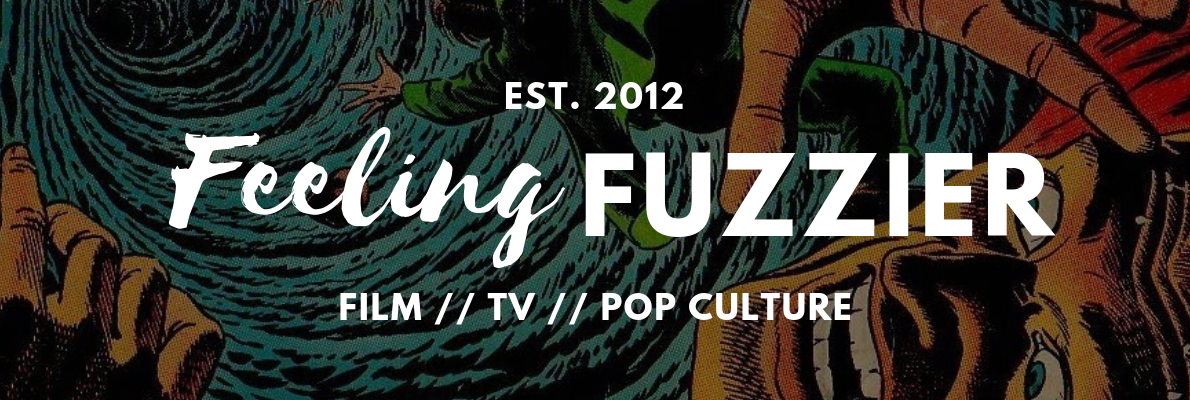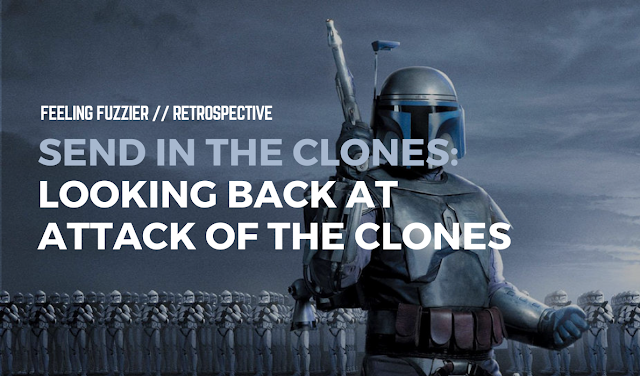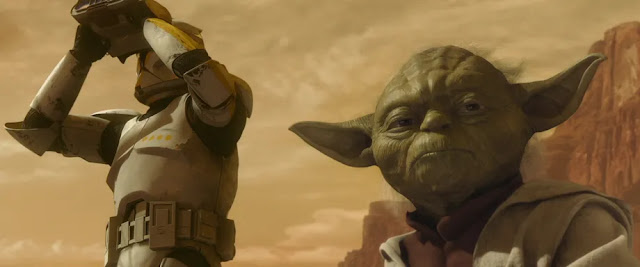After the disappointment of The Phantom Menace, Star Wars fans were hesitantly looking forward to and fearing the sequel, Attack of the Clones, in equal measure. Surely lightning couldn't strike twice, right? Twenty years on from its release, I'm taking a look back at whether Episode II has stood the test of time.
Little did I know, of course, that wider sentiment on George Lucas' new Star Wars was less than favourable. But in the wake of the sequel trilogy, the Star Wars prequels have undergone something of a critical reappraisal. Some of the discourse is just people my age hitting adulthood and yearning for something akin to what we grew up with; but some of it is more measured critical thought, that focuses on Lucas' auteur approach to the trilogy.
Where Disney's recent Abrams/Johnson/Abrams trilogy lacks narrative cohesion, the prequels are 100 per cent, full-bodied Lucas – for better and for worse. Essentially gifted a blank cheque and complete control, Lucas could conjure up whatever he wanted for the Star Wars prequels, and nothing exemplifies this better than Attack of the Clones, with its Byzantine plot, am-dram dialogue, intense political critique and incredible visual effects.
There's no denying that Attack of the Clones, at the time, was cutting-edge. The splashy visual effects were revolutionary, from duplicating Temuera Morrison over and over for the titular clone army to transitioning Yoda from scruffy puppet to full CGI model that could kick, flip and spin. The mythical Clone Wars, teased so casually back in 1977, spring to life in the film's third act, with vast armies with droids, mechs, tanks and ships all rendered in impressive detail.
The alien worlds too – from the alien hives of Geonosis and the crashing waves of Kamino to the towering spires of Coruscant and the romantic architecture of Naboo – capture the spirit of Star Wars too. Unique designs and distinct civilisations broaden the scope and strangeness of the galaxy, something that would continue in Revenge of the Sith with the mines of Utapau or the trees of Kashyyyk.
Looking back, it's incredible to think that Lucas was able to slip this script past the studio and into production. He doubles down on the stilted Senate hearings that audiences loathed about The Phantom Menace, and maps out a puzzling mystery in which a character we've never heard of before and never see in the flesh, kicks off the domino effect that leads to the downfall of democracy.
That's just one layer of the film's Russian doll structure, where political intrigue sits inside a detective noir which sits inside a sweeping romance which sits inside a tragic war film. It's a tangled web of ideas and motifs and themes – some of which click together and some of which really, really do not.
Clearly, unchained Lucas is a helluva drug. With its on-the-nose deconstruction of Bush-era politics, there's something to be said for Lucas' specific brand of brash blockbuster moviemaking over Disney's market-tested and binary good-vs-evil ideals. Don't get me wrong, I like the Star Wars sequels (well, the first two anyway). But they lack the thrust, scope, ambition and strangeness of Lucas' two trilogies.
When viewed back-to-back-to-back, the prequels are an audacious undertaking, a three-film arc that attempts to grapple with a galactic society's descent from stifling bureaucracy to imperialism and fascism. Thousands of star systems, slipping away from civilisation and into disrepair – it's a far cry from the scruffy band of heroes that people loved in the 80s. Screw what audiences want, seemed to be Lucas' underlying mantra – I'm going to give them something entirely different.
Your mileage may vary (and when it comes to the prequels, chances are it does) on whether it sticks the landing and actually makes for compelling viewing. For me, I'm much less interested in the broad strokes of Lucas' politics than I am in the characters around which it revolves, which is why Attack of the Clones is such a bore.
All of this political intrigue is travelling in tandem with Anakin Skywalker's lustful pursuit of Padme Amidala and descent into darkness. The problem is, this complex character journey of corruption never clicks, so we're zero for two when it comes to crucial plotlines that are travelling towards a destination that audiences are already familiar with. There's no intrigue in their outcome, and now there's nothing compelling about watching it all play out either.
Anakin is arguably the most integral character in all of Star Wars – so why does his story feel so dull and frustrating to sit through? Lucas' writing is painful across the board, but the stilted dialogue between Padme and Anakin is some of the worst.
Their romance, for lack of a better word, is never convincing or compelling. Lucas pairs two actors who don't share a drop of chemistry, and then hands them a script that gives them nothing to work with. Every scene they share is hilariously bad at best, painful and cringeworthy at worst.
Pivotal character moments, like the scene in the Lars workshop where Anakin confesses to Padme how he slaughtered the Tusken Raider tribe that killed his mother, fall flat with a resounding flump.Attack of the Clones' other pratfall is its length and pacing. It's two hours and twenty minutes, but it feels like three. The film is struggling with middle chapter syndrome, spending its first act catching us up on the characters after the plot skips ahead a decade, and a third act that tees up the climactic final chapter, before ending right as the going gets good. The Clone Wars that we've been waiting to see are just getting started; battle lines are still being drawn, allegiances are still taking shape. What do you mean we sat through all that just to end it here?
So I while I can look back on moments and motifs with fondness, Attack of the Clones has not aged particularly well, and remains one of the weakest entries to date.
It's not the worst Star Wars film (that honour falls to JJ Abrams' Rise of Skywalker), but it feels like a chore to sit through every single time. No amount how ambition can excuse poor execution, and Attack of the Clones is poorly executed from start to finish.







No comments:
Post a Comment